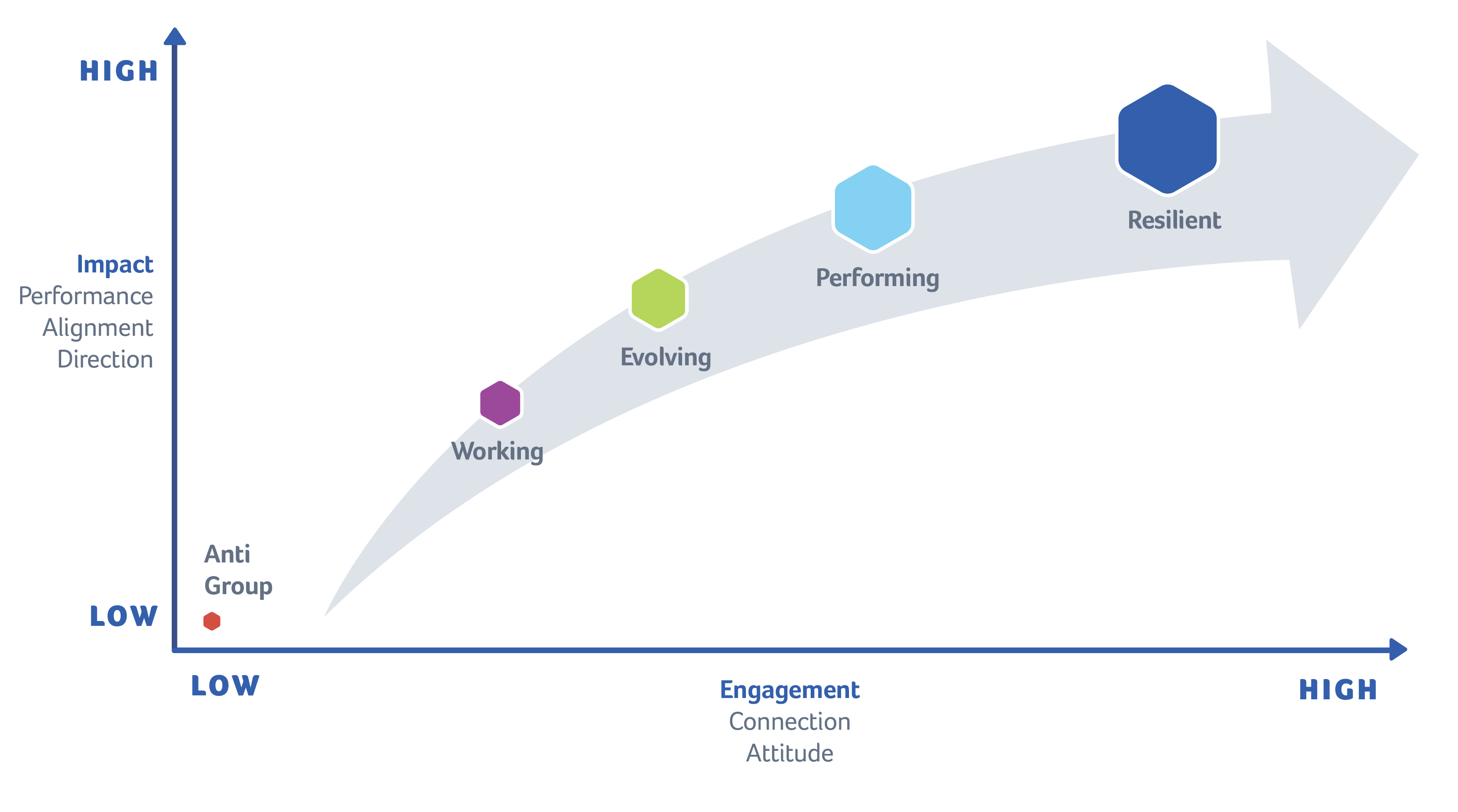
Team Development Pathway & Team Types
Download this Resource:
| Team Development Pathway and Team Types |
Summary:
The Team Development Pathway
At RallyBright we believe there is an unnatural evolution associated with becoming a resilient team.
We say “unnatural” because it’s human nature— or natural— to cooperate and collaborate, but the approach to teamwork at most organizations is antithetical to that natural bent. Instead, outdated reward systems, siloed teams and other structural challenges thwart the development of synergistic teams. As a result, most teams are either stuck in a constant state of evolution or are satisfied remaining a “working group.” Few are high performing and fewer still become resilient.

As teams develop Direction, Alignment and Performance their results have higher business impact, and as they strengthen their Connection and Attitude they grow more engaged. While this pathway illustrates the different stages that teams pass through, it’s not uncommon for a team to skip a stage as it moves in either direction; the exact pathway isn’t prescribed. What is consistent is that resilient teams operate with high level of mastery across all five of the dimensions.
The Five Team Types
To meaningfully develop, teams need to commit to the work required to become resilient. This means accepting that behaviors not usually prescribed in the how-to literature of team development — behaviors such as self-sacrifice, vulnerability and investing in others— become the norm. These often unnatural corporate behaviors not only underpin the journey to becoming resilient, but also drive sustained business impact.
| Anti-Group |
The anti-group is characterized by in-fighting, lack of trust and conflict. Anti-groups are low on Direction, Connection and Attitude and as a consequence are low-performing and ineffective... |
| Working |
A working group is a collection of individuals who are brought together by the manager or leader to individually report on the health and well-being of their respective businesses. There is no shared purpose in a working group... |
| Evolving |
The evolving team has the self awareness required to identify and agree on the steps required to become a resilient team. This stage is characterized by a commitment to answering the question, “what is it we can do together that no one team member could achieve on their own?” ... |
| Performing |
The performing team has a shared purpose and brand and tracks the metrics that summarize the impact of their collective efforts. These teams are characterized by the sustained impact they have on the business and the effectiveness of their collective relationships... |
| Resilient |
The resilient team has one significant ingredient the performing team lacks. Every member is deeply invested in the success and well being of others on the team... |
The different types of teams each represent a different level of team capability in terms of business impact and engagement. Download the resource below for more details.
Download the Team Development Pathway and Team Types